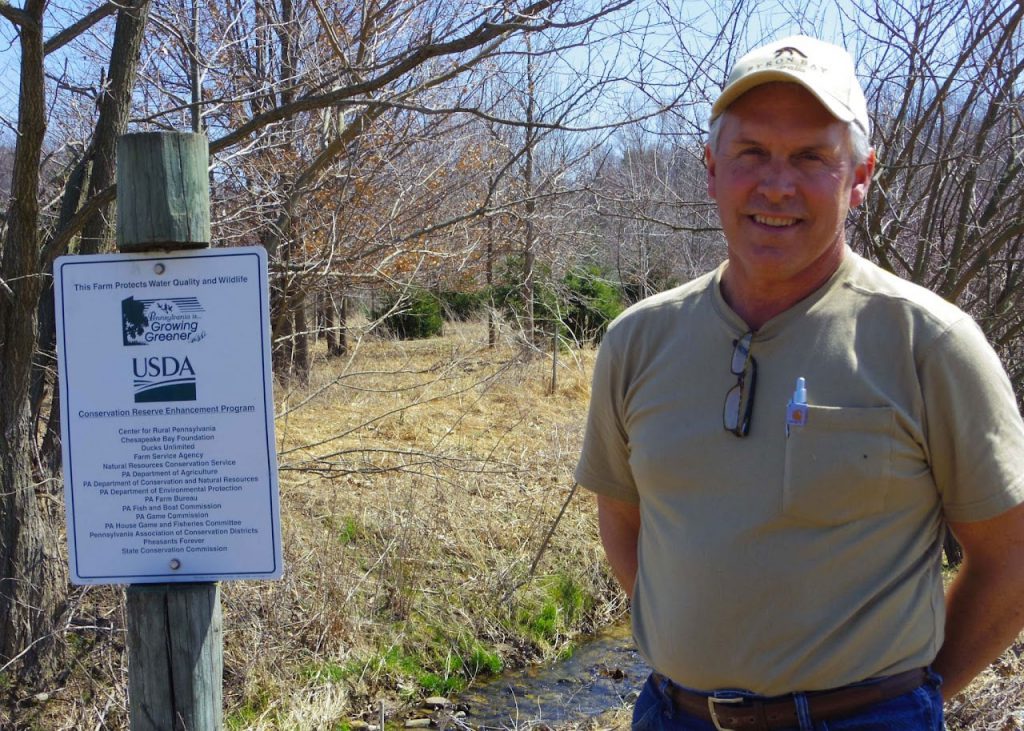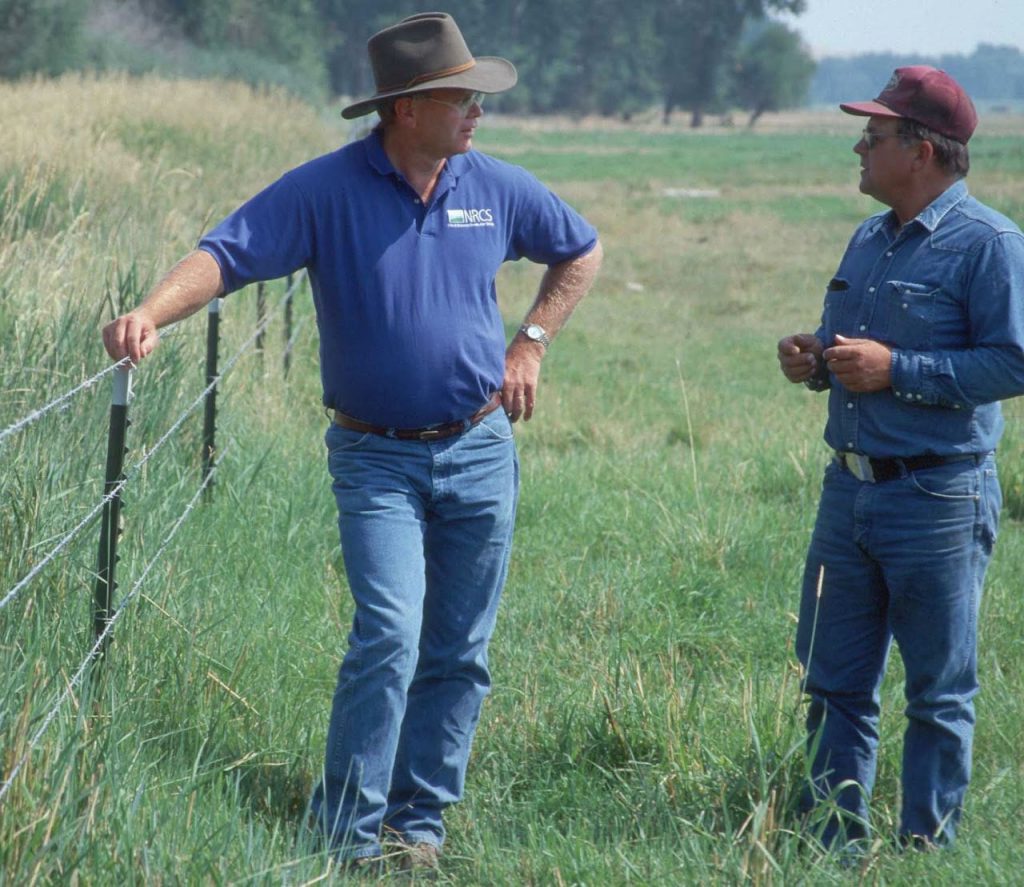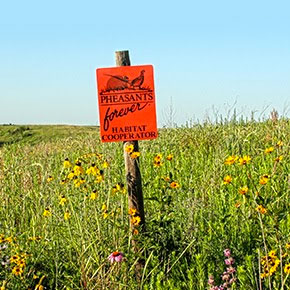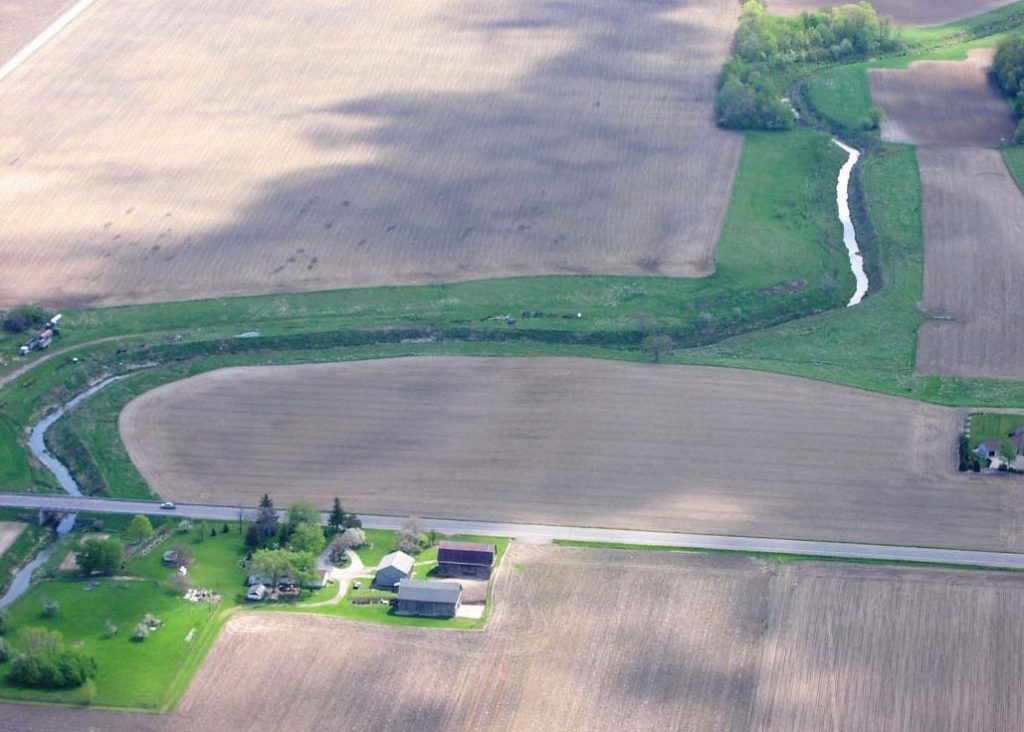Farmers and Landowners

Who Can Participate
The CREP program is available to those who own cropland, and for marginal pastureland along non-forested streams anywhere in Pennsylvania. The land must have a recent history of agricultural production to be eligible, but the landowner does not have to farm the land currently.
What CREP Pays For
CREP offers a menu of 13 different conservation practices that you can choose from to improve fields and pasture along streams or steep hillsides. Short summaries of each practice are available on this page.
A local CREP planner can help you evaluate the options that are the best fit for your operation. Contact us to schedule a free, no-obligation consultation.


Types of Payments
Depending on the project you work out with your CREP planner, you will be eligible for various forms of payment. Contact your local Farm Service Agency office to discuss your particular situation. They will help you navigate through the options, which include:
- Signing Incentive Payment (SIP): You may receive a one-time incentive payment for grass waterways, streamside buffers, or filter strips. You get paid as soon as your contract is approved.
- Practice Incentive Payment (PIP): Some practices are eligible for a one-time incentive payment, for as much as 40% of the eligible costs. You are paid after the practice is installed and certified.
- Payment to Establish Practice (Cost Share): You may get a one-time reimbursement to cover improvement costs. You get paid once the project is finished and certified.
- Annual Rental Payment: You will receive an annual rental check. The amount will depend on the soil type, erodibility, and other factors.
- Maintenance Rate Payments: Some practices are eligible for an annual payment to cover maintenance costs.
Note: Every contract has its own unique combination of farming, soil, water, costs, and payments. A local CREP planner can help you sort through it. Contact us to schedule a free, no-obligation consultation.
Case Study One: Stream Forest Buffer With Fencing
A Pennsylvania farmer has 1/2 mile of stream that runs through pasture and row crop fields. He wants to keep his soil and his cattle out of the creek. The solution is to plant a forest buffer along the creek, put a fence around it, and get a watering system for the cows. After consulting with their local CREP Planner, the farmer settled on the following project:
- Enroll 12 acres of marginal pastureland along the stream into CREP and replant the bank with native trees and shrubs
- Fence the cows out of the stream and install a solar-powered well to get clean water to them
- The total eligible cost of the project, including the fence, works out to $2,500/acre — $30,000 total.
- The contract will cover 15 years.
To help the farmer, the FSA offers the following CREP incentives:
- $1,200: A one-time Signing Incentive Payment (12 Acres x $100.00/acre)
- $15,000: A one-time reimbursement of up to 50% of eligible costs from FSA for buffer planting and fencing
- $15,000: A one-time reimbursement of up to 50% of the eligible costs from PADEP for buffer planting and fencing
- $12,000: A one-time Practice Incentive Payment of 40% of eligible costs
- $1200 per year: Annual rental for 12 acres at $100 per acre.
Note: This is a hypothetical example. Every CREP contract has its own unique combination of farming, soil, water, costs, and payments. A local CREP planner can help you sort through it. Contact us to schedule a free, no-obligation consultation.


Case Study Two: Wildlife Grass Planting
A Pennsylvania Sportsman Club would like to expand pheasant habitat on farmland it owns. They also want to protect their trout stream. After consulting with their local CREP planner, the club commits to the following project:
- Enrolling 85 acres of land in CREP: 25 acres of cool-season grasses and 60 acres of mixed native grasses
- The total eligible cost of the project works out to $6,370
- The CREP contract is for 15 years
To help the club, FSA offers the following CREP incentives:
- $3,185: A one-time reimbursement of up to 50% of eligible costs from FSA for the grassland planting
- $3,185: A one-time reimbursement of up to up to 50% of the eligible costs from PADEP for the grassland planting
- $4250 per year: Annual rental for 85 acres @ $50 per year
Note: This is a hypothetical example. Every CREP contract has its own unique combination of farming, soil, water, costs, and payments. A local CREP planner can help you sort through it. Contact us to schedule a free, no-obligation consultation.
Case Study Three: Forest Buffer and Grassed Filter Strips
A Pennsylvania farmer has a small creek running between two of her crop fields. The stream is subject to frequently floods which reduces the yield and cause erosion and sedimentation concerns. After consulting with her local CREP Planner, she commits to the following project:
- A total of 1.5 acres of grassed filter strips 50 feet wide between the stream and cropland fields along both sides of the stream
- The total eligible cost of the project works out to $200.
- The contract will be for 10 years
To help improve her farm and protect the creek, the FSA offers her:
- $150: A one-time Signing Incentive Payment of $100 per acre
- $100: A one-time reimbursement of up to 50% of eligible costs from FSA
- $80: A one-time Practice Incentive Payment of 40% of eligible costs
- $75 per year: Annual rental for 1.5 acres at $50 per acre.
Note: This is a hypothetical example. Every CREP contract has its own unique combination of farming, soil, water, costs, and payments. A local CREP planner can help you sort through it. Contact us to schedule a free, no-obligation consultation.

